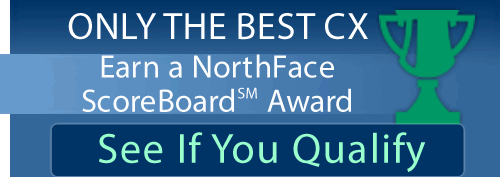After planning and implementing a CEM strategy, a post-launch review is advisable to assess what worked, what didn't, and where further attention is most needed in the future. A formal executive briefing would examine customer survey results and include such areas as key account analysis and benchmarking.
Communication to Stakeholders
With the groundwork of a successful CEM program defined and implemented, it is now time for formal communications with your key stakeholders. These are the internal and external groups whom you've been surveying and analyzing all along. By now, they naturally are curious about what it all means.
One thing is clear. You have created expectations for process improvements in your customer- and employee-facing operations. If you don't communicate transparently on results of your CEM strategy, then you will lose credibility with your stakeholders and invite them to assume the findings must be negative, which probably explains your silence.
While not every component of your CEM strategy will meet its stated objectives, you will have a very compelling story to tell about specific improvements in customer satisfaction and loyalty in many areas. The CEMDNA Playbook Strategy provides a host of online, offline and other marketing tools that tell your story of customer satisfaction, loyalty and service excellence powerfully and persuasively to internal and external audiences. You can use these communications tools to further brand your CEM strategy and to formally kick off the program if you have been waiting to do so until you knew what the results would be.
WinBack Strategy
Invariably, no matter how well you have designed and implemented your CEM strategy, you will lose customers. If they are key accounts, you probably would like to win them back, and following the Corrective Action Plan can come in handy even now. If they are not key accounts, the tendency is to want to re-engage them, but think hard about the profitability of some of these accounts. Some customers consume much more service/support resources than they contribute in revenue, referrals and name recognition, so you really will not miss them should they leave.
But let's look at customers who leave who are key accounts today or may reach that status in the foreseeable future. Follow these CEMDNA Playbook Strategy guidelines
- Contact and survey each lost customer Determine the key drivers for termination of their relationship with you. This will help determine the key drivers for re-entry. If possible, form focus groups of lost customers to gain insight through face-to-face interaction. Next, a small (8-10) number of questions drawn from the focus group can form the basis of a web survey sent to all your customers, or logical subsets, to see if any other accounts are vulnerable to leaving. This will be your primary indicator of why customers chose to leave. With detailed analysis and reporting of results, you can use this intelligence to see storm clouds forming while there is still time to avoid losing the account.
- Develop and implement a recapture program Based on survey results above, identify the strategic and/or profitable accounts you want to win back and implement a recapture program. Consider assigning these accounts to senior managers for this purpose.
- Prevent future attrition Focus on the primary key drivers for termination, and determine recurring systemic issues that are causing problems. With this information in hand, implement corrective action plans to minimize unwanted customer attrition in the future.
Omega can help you devise effective, proactive strategies to successfully re-establish profitable relationships with former customers who were lost to your competition or for other business reasons. We work directly with your former customers to review your business history with them and then use this information to help identify "re-entry" opportunities. The information provides insight into why the competition was chosen over your company, or what business reasons motivated the defection. But it also documents why you initially prevailed over your competitors. Further, it provides critical information necessary for recommending training and education, as well as the opportunity to improve your company's overall sales performance.
When you've lost a customer to your competition, we uncover the key reasons behind the decision making process information that is highly instructive to either help you win back your customer or to use in future sales opportunities.
Return on Investment Analysis
Like any business endeavor, a CEM strategy ultimately must be measured by bottom line results. ROI analysis is a review of the measurable financial impact of your CEM program.
Key ROI drivers for CEM strategy on an annual basis are below. Many organizations can trace ROI to a single transaction in any one in these areas so, taken together, return on investment is typically very short.
- Customer Acquisition Trace new accounts to their source. How many came from referrals from your existing loyal and satisfied customers? How many heard about your commitment to customer service excellence through your CEM Communications program and wanted to be with a company like yours? How well have you trained your sales and account management teams in your CEM strategy so they, in turn, can lock in long-term loyalty and profitability of newly-acquired customers? How are you imbedding your CEM strategy into your RFP/RPQ? Are you surveying new customers to determine whether your CEM program was a factor in their decision to do business with you?
- Customer Retention - How much business did you retain by using Action Alerts and other CEMDNA Playbook components designed to identify at-risk accounts? Tabulate all the efficiencies and operational streamlining you've instituted based on your CEM program across all customer touchpoints. These all help to prevent operational losses. Also consider reduced costs to serve, as loyal customers need less human and financial resources to serve and support.
- Upgrades Are you getting more of your customers' spending? Look at the increase in cross-sells and up-sells to existing accounts, as well as increases in service revenue (e.g., service contracts vs. time-and-materials contracts). How did actual results compare with projections?
- WinBack - Based on the significant, measurable success of your CEM program, you have the most persuasive argument possible to recover lost customers, particularly those who have been your most profitable or strategically important accounts. The CEM WinBack strategy helps you rebuild relationships by identifying re-entry opportunities by addressing how you have corrected the key issues behind a given customer's defection. Calculating revenue from regained accounts is one of the more rewarding benefits of a CEM program.
To identify the bottom line impact of your CEM strategy, we have devised a set of survey questions that would be sent to decision makers, recommenders and influencers within your customer base. Omega's Center for Loyalty Research would then analyze the survey results, which may include a linkage analysis to assess the impact of customer satisfaction on revenue.
Sample Survey Questions For ROI Analysis
For Newly-Acquired Customers
Please select from the choices below your single most important reason for becoming a customer:
- Price
- Capabilities of products/services
- Industry innovator
- Reputation for superior customer service
- Referral or recommendation from an existing customer, partner or other knowledgeable third party
- Other (please specify)
For Retained Customers
Please select from the choices below your single most important reason for remaining a customer:
- Price
- Superior capabilities of products/services over time
- Sustained record of industry innovation
- Consistently superior customer service
- Ease of doing business with us
- Other (please specify)
For Customers Who Upgrade Within Product Line or Purchase Additional Products/Services
Please select from the choices below your single most important reason for upgrading your current product and/or purchasing another product from us:
- Price
- Capabilities and compatibility of products/services
- Sustained record of industry innovation
- Consistently superior customer service
- Ease of doing business with us
- Other (please specify)
For WinBack Customers
Q1: Please select from the choices below your single most important reason for discontinuing doing business with our firm.
- Price
- Capabilities of products/services were substandard
- Insufficient evidence of being an industry innovator
- Unacceptable levels of customer service
- Negative feedback from other customers, partners or other knowledgeable third parties
- Other (please specify)
Q2: If our firm can demonstrate that we have taken corrective action to address the area most responsible for your dissatisfaction, would you be open to discussing this corrective action with us?
- Yes
- No







